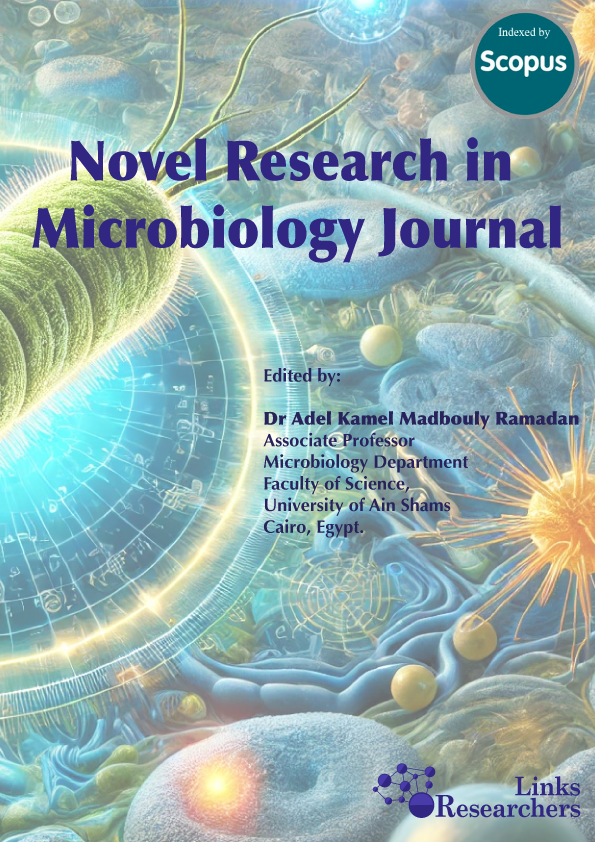B. Ramanujam, R. D. Prasad, S. Sriram and R. Rangeswaran
Nasia Batool*, Imtiaz Ahmad Qamar**, Imdad Hussain Mirza** and Muhammad Fateh Ullah Khan**
*Irum Javed1, Muhammad Asgher2, Sadia Noreen1, Humara Naz Majeed1 and Tanzila Sahar1
Muhammad Irfan*, Saeed Gul*, Mohammad Younas*, Babar Nawaz*, M. Ishfaq*, M. Amir Durrani*, Abid khan*
Muhammad Usman Ahmad2
Najeeb Ullah1*, Muhammad Nadeem2, Malik Mujaddad-ur-Rehman1, Rubina Nelofer2 and Yasir Arfat3
K.M. Injarul Haque, Sharmeen Islam*, Md. Rokibul Islam Khan, Md. Ruhul Amin
Avijite Sarker, Sharmeen Islam, S.M. Ariful Islam, Md. Rokibul Islam Khan*, Md Mukhlesur Rahman
Nguyen Hai Quan, Nguyen Huu Van*, Nguyen Thanh Thuy, Vo Thi Minh Tam, Le Duc Thao, Le Duc Ngoan
Desy Cahya Widianingrum1*, Himmatul Khasanah1, Melinda Erdya Krismaputri1, Susan Barbara Patricia Sembiring Meliala2
Faustin Dokui1*, Frédéric M. Houndonougbo1, Service G. Djidda1, Venant P. Houndonougbo1, Edith Gangbedji1, Gwladys Menon Agbo2, Sedjro Ludolphe Dedome2, Séverin Babatoundé1, Soumanou Seibou Toleba1, Christophe A.A.M. Chrysostome1
Ovirup Bhushan Paul1, Shodipta Sharma Urmi2, Md. Ashraf Ali Biswas3*
Khalil1*, Dwi Ananta1, Andri Bachtiar2, Hermon3
Limbang Kustiawan Nuswantara, Eko Pangestu, Marry Christiyanto, Santoso Dwi Pratomo, Elyza Zahrotul Muhtaromah
Key Words: Pastoralists, livelihood, Juniper Forest, Balochistan, Pakistan
...Budi Santoso*, Bambang Tjahyono Hariadi, Marlyn Nelce Lekitoo
Ahsan Abbas Abro1, Imrana Khushk1, Abdul Nabi Jatt2, Chaudhary Haider Ali3, Abdul Sattar Qureshi1*, Farah Naz Talpur4, Safia Bano1
A. Arif Rahman1, Renny Fatmyah Utamy2*, Ambo Ako2, Mohammad Mijanur Rahman3, Siti Annisa Sukri1
Abd-Elhalim, B.T.1*; Gamal, R.F.1; Abou-Taleb, Kh.A.1; Haroun, A.A.2
Dhurva Prasad Gauchan1*; Ashok Kumar Bhattarai2; Shishir Pandey1; Sunil Bhandari1
R.F. Utamy1*, A. Ako1, H. Hasbi1, Z. Ramadan2, R. Mufliha2, A. Mutfaidah2, A. F. Nurbina2, I. D. A. Mahayani3, A. A. R. Hakim2,4
Featuring
-
The Effect of Age on Prediction of Body Weight from Body Linear Measurements of Female Indigenous Matebele Goat in Zimbabwe
Never Assan, Machel Musasira, Nicholas Mwareya, Kwena Mokoena, Thobela Louis Tyasi, Enock Muteyo
J. Anim. Health Prod., Vol. 13, Iss. 2, pp. 265-274
-
Predicting Meat Yield and Quality of Simmental X Ongole Grade Crossbred Bulls using Body Measurements
Nadlirotun Luthfi, Alex Setyo Mulyo, Danang Yusuf Setiawan, Ismiarti, Edy Rianto
J. Anim. Health Prod., Vol. 13, Iss. 2, pp. 258-264
-
Impact of Ocimum basilicum Essential Oils Supplementation in Semen Extenders on the Quality of Cryopreserved Canine Sperm
Nguyen Van Vui, Nguyen Luu Trong Nghia, Huynh Thanh Tan
J. Anim. Health Prod., Vol. 13, Iss. 2, pp. 251-257
-
Effect of Adding Different Levels of Curcumin Powder to the Diet on some Reproductive, Fertility and Hatchability Performance of Broiler Breeders
Basim Mandeel Malik Al-Sharifi, Emad Abdulgabber Ali
J. Anim. Health Prod., Vol. 13, Iss. 2, pp. 243-250
Subscribe Today
Receive free updates on new articles, opportunities and benefits

© 2025 ResearchersLinks. All rights Reserved. ResearchersLinks is a member of CrossRef, CrossMark, iThenticate.












